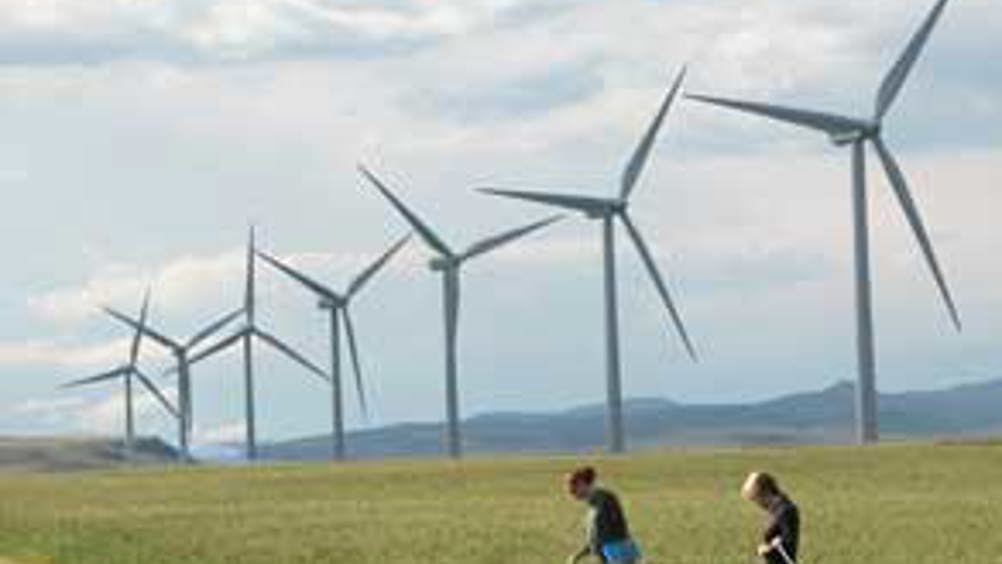The question of why large numbers of migratory bats are killed by certain turbines of southern Alberta’s wind farms every year has been answered by a University of Calgary researcher.
Biology professor Robert Barclay has determined that the vast majority of bats found dead below the turbines near the Canadian Pincher Creek wind farm suffered severe injuries to their respiratory systems consistent with a sudden drop in air pressure - called barotrauma - that occurs when the animals get close to turbine blades.
His studies showed that 90 per cent of the bats examined after death showed signs of internal hemorrhaging consistent with barotraumas while only about half of the bats showed any evidence of direct contact with the blades.
Because bats can detect objects with echolocation, they seldom collide with man-made structures. However, an atmospheric-pressure drop at wind-turbine blades is an undetectable - and potentially unforeseeable - hazard for bats, partially explaining the large number of bat fatalities at these specific structures.
Bats' lungs, like those of other mammals, are balloon-like, with two-way airflow ending in thin flexible sacs surrounded by capillaries. When outside pressure drops, those sacs can over-expand, bursting the capillaries around them.
Bird lungs, on the other hand, are more rigid and tube-like, with one-way circular airflow passing over and around capillaries. That rigid system can better withstand sudden drops in air pressure.
Unfortunately, there is no obvious way to reduce the pressure drop at wind turbines without severely limiting their use. Because bats are more active when wind speeds are low, one strategy may be to increase the wind speed at which turbine blades begin to rotate during the bats' fall migration period.
The study was initiated by TransAlta after the company’s wind farm operators noticed bat carcasses below turbines and approached Prof Barclay, an internationally recognised bat expert, for advice.











Taking steps toward reindustrialisation
High value is not the same as high cost/price and does not need excessive automation. Appropriate and innovative manufacturing tools are what led (in...